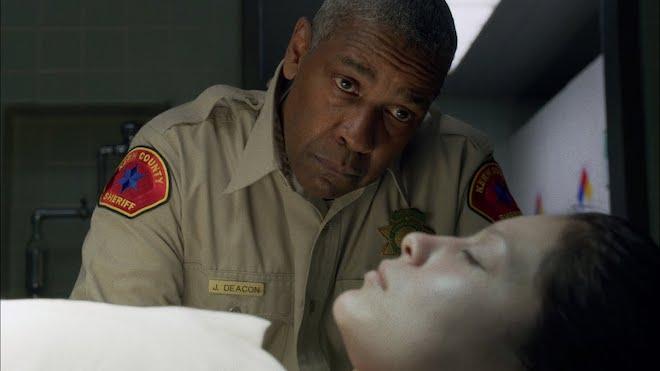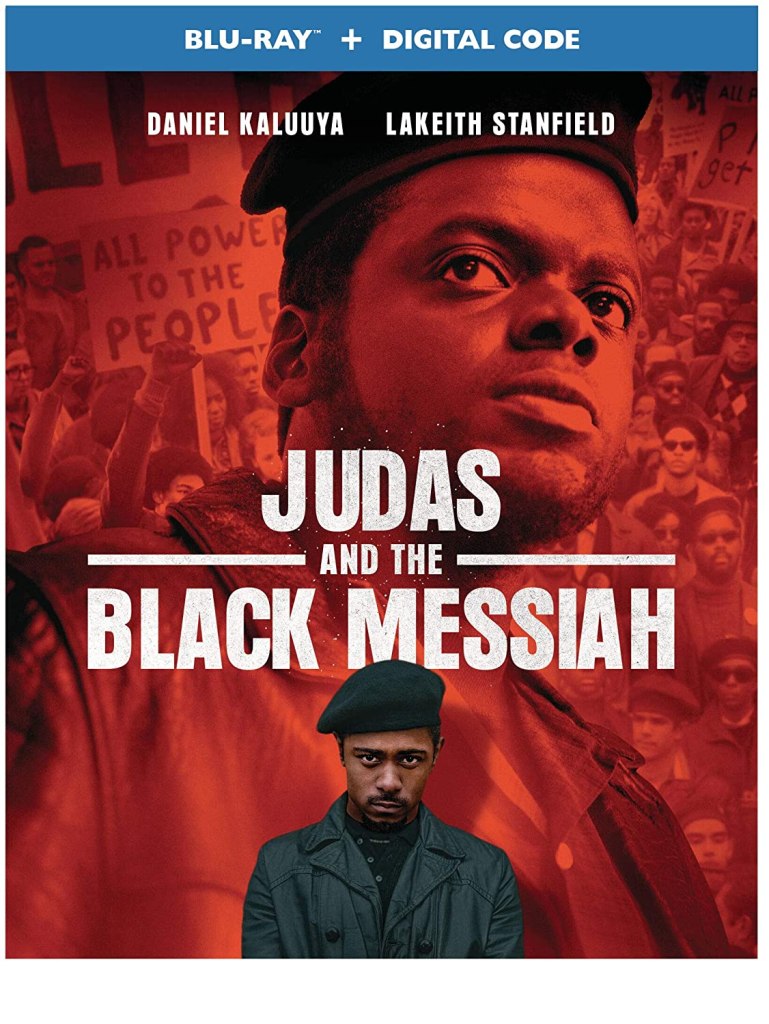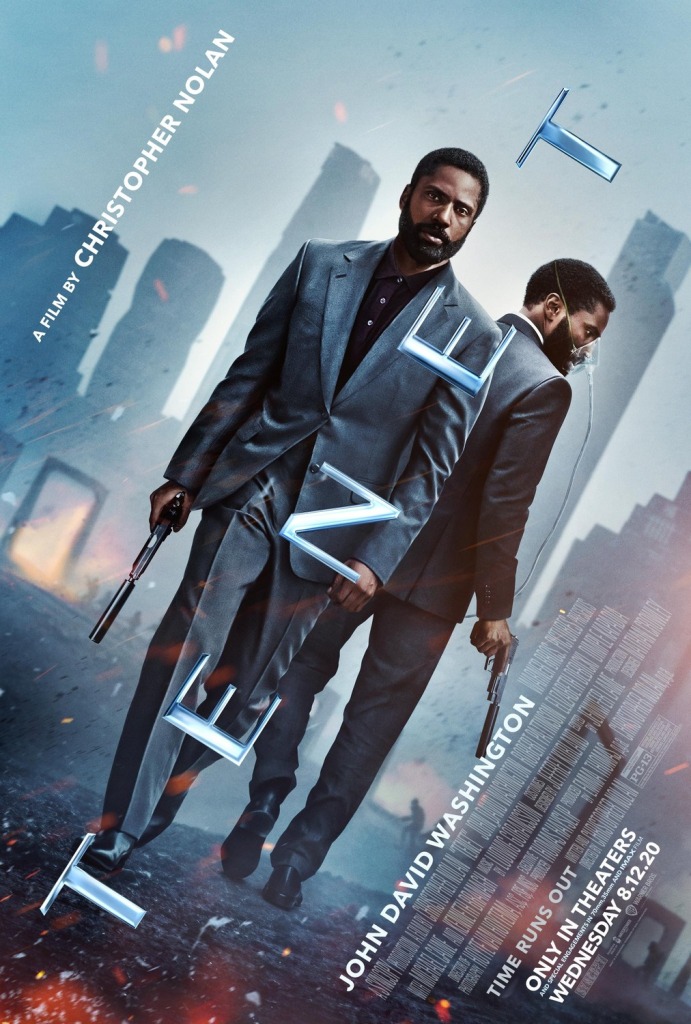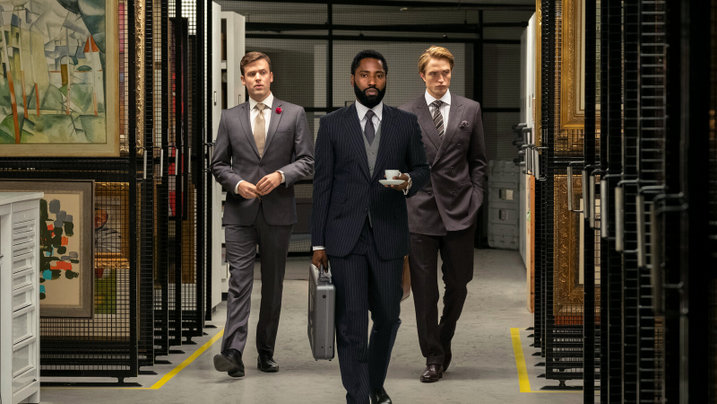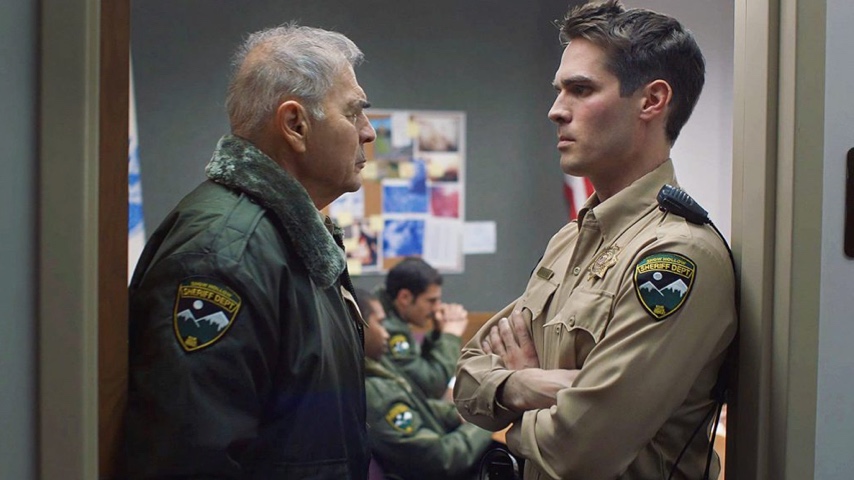‘Unhinged’ is Not Unhinged Enough

“Unhinged” was one of the first movies to be released in theaters near the end of the COVID-19 pandemic. This may very well be its biggest claim to fame as what results is an action thriller which is never boring, but hints at a motion picture which could have been so much better than it is. As much as I want to look at a movie for what it is as opposed to what I want it to be, this one has me inescapably thinking of what could have been improved with the material. Seriously, this could have been an epic thriller which stood proudly alongside Steven Spielberg’s “Duel” and “The Hitcher” (the original, not the terrible Platinum Dunes remake), but no such luck.
We are introduced to Tom Cooper (Russell Crowe) who, as “Unhinged” begins, breaks into his ex-wife’s house, murders her and her boyfriend who has the bad luck of sleeping at her place on this particular evening. These actions are preceded by Tom holding a lit match in his fingers and letting it burn right down to the tip of his skin. I kept waiting for him to flinch, but he never does. Clearly, he has already reached his D-FEN’s “Falling Down” moment, and it is all downhill for him from there.
We then meet Rachel Flynn (Caren Pistorius), a recent divorcee who, like me, sleeps in a lot later than they should. This particular morning, she is supposed to be meeting with a client, driving her son Kyle (Gabriel Bateman) to school, and figuring out what to do with her brother Fred (Austin P. McKenzie) and his girlfriend Mary (Juliene Joyner) who have taken up residence in her house due to their unfortunate financial circumstances. On top of all of this, one of Rachel’s clients coldly fires her while she drives her son to school. Clearly, she is already having a very bad day and is understandably pissed.
Then Rachel ends up behind Tom in his truck, and she becomes irate when he is not quick to step on the gas before the light turns red. She ends up passing him, more or less flips him off, and when he asks her for an apology in an effort to smooth things out, she is dismissive as she sees his problems as being no more or less important than anyone else’s. From there, Tom becomes determined to show her what it is to have a very bad day. This reminded me of when Robert De Niro told Nick Nolte that he would teach him the meaning of commitment in Martin Scorsese’s remake of “Cape Fear,” and we all came to see how vicious De Niro’s intentions were.
The first thing I should point out about “Unhinged” is Russell Crowe’s performance as Tom Cooper. The material might seem beneath him as this is the same actor who gave such epic performances in “Gladiator,” “A Beautiful Mind” and “Cinderella Man,” but he helps to give Tom a little more dimension than the screenplay might imply. Crowe helps to make Tom’s psychotic behavior all the more frightening than it might be if it were another actor taking on this role. It also helps that Crowe is playing a man who is prepared to commit suicide by cop as he has nothing left to lose, and this makes him all the more frightening as a result.
Playing Tom Cooper’s unfortunate victim is Caren Pistorius. I am not familiar with her work, but she made a breakthrough with her performance in “Slow West” in which she co-starred with Michael Fassbender and Kodi Smith-McPhee, and she appeared in Derek Cianfrance’s “Light Between Oceans.” She was also born in South Africa and raised in New Zealand, and this makes her American accent all the more impressive.
Pistorius makes Rachel Flynn into the type of protagonist you quickly come to care for. Rachel is not perfect (who is by the way?), but we root for her because the actress makes her into an everyone we have to recognize in our own lives. Like her, we would flip off any driver who would never be quick to step on the gas once the light turns green to where it is like an automatic impulse, but we don’t expect said drivers to come after us with a murderous vengeance. Watching Rachel deal with Tom’s murderous advances makes the furious emotions on display all the more brutal.
Having said all of this, “Unhinged” still has a lot of problems. Among them is that there are many plot holes throughout. Whether or not I could quickly identify these holes is not important. What is important is that I could tell they existed as much as the great white shark’s unrealistic roar of pain came about in “Jaws: The Revenge.” I mean, seriously, how does Tom get to learn about Rachel’s life through her cell phone ever so quickly?
Plus, there are many things which are telegraphed throughout like a cell phone being left in an individual’s car which you know will get stolen, and a pair of scissors which figure prominently in the climactic battle to where you wonder where in Tom’s body they will end up. Just when I thought “Unhinged” would subvert the cliches a movie like this is expected to have, it falls victim to them in ways which just kill the tension and the plausibility.
I recently came across an article on The Guardian website regarding Robert Harmon’s “The Hitcher” in which Rutger Hauer, who played the murderous psychopath John Ryder, stated that he didn’t play bad guys. This made Hauer’s performance in that film all the more fascinating to me, and it also made me want to believe Crowe had the same intentions when it came to him portraying Tom Cooper. But in the end, “Unhinged” blows a lot of opportunities to make it stand out from so many thrillers like it, and it will not last long in the memory after you have watched it.
* * out of * * * *



